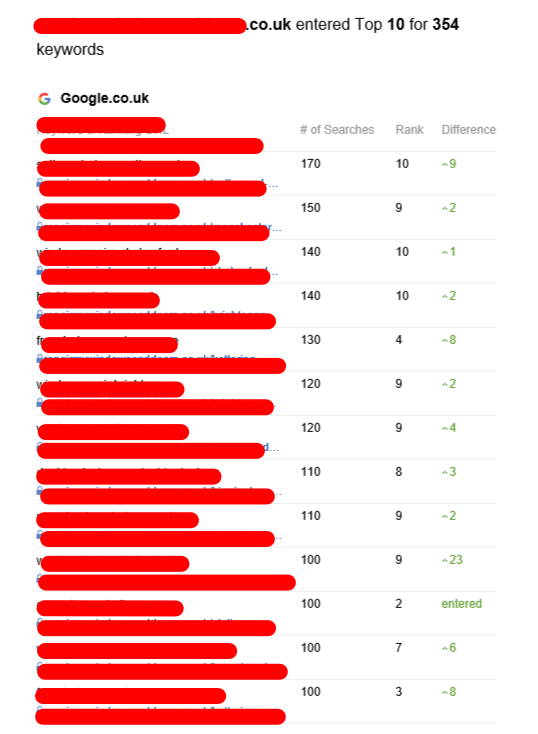Backlink Tier - The Hierarchy of Backlinks That Scale Your SEO Campaign
Backlink tier is the hierarchy of links you build to increase the effectiveness of your SEO campaign. Each level adds an additional layer of protection from Google and its penalties.
In order to get it right you'll have to put in lots of effort and time. Google takes weeks to discover and evaluate new backlinks.
First-Tier Links
The first tier of links that connect to your piece of content must be high-quality dofollow backlinks that are from reliable websites. These links are referred to as Tier 1 backlinks, and they form the basis of your link-building strategy. They provide a guarantee for your website page, thereby giving it the domain authority needed to rank well in search results pages of engines. If, for instance your blog article was published on HubSpot and it included a tier one hyperlink to SearchEngineLand's compilation Link Building Statistics then SearchEngineLand’s ranking on the web will benefit from the link equity that HubSpot passed on.
The second tier of backlinks may be a bit more varied, and they can include low-quality links such as spammy forum posts or low-quality bookmark websites and directories. The primary objective of Tier 2 is to create content of high-quality that links back to your first-tier backlinks. This is because content that is of high quality can enhance the content it is placed in and not stand out as an addition to SEO purposes.
To build an effective tiered campaign, you'll need to invest in top-quality materials and tools such as RankerX or GSA. The time and money spent doing a tiered marketing campaign manually can be well worthwhile if you intend to see the increase in ranking benefits of a properly built backlink pyramid.
Second-Tier Links
Tiered link building is intended to allow users to navigate through other pages before navigating to your site. It is essential to select relevant second-tier sources of backlinks that are relevant to your business and your website to make this work. Guest blog posts are more effective for this purpose than account profiles because they provide valuable content that users will want to consume.
You should be cautious about using tier-2 links on forums or other low quality sites. Instead, use high-quality pages like industry news or guest posts. These links will look more natural and will have greater impact on your rank in the search results. In addition they're more likely be acknowledged by Google as having passed link equity, which could increase their rank in SERPs.

If you are planning to build tier two links with the intent of improving your SEO rankings it is important to be aware that it's difficult to get these types high-quality backlinks by hand. It can take a long time to pitch guest posts to top-tier publishers and even more time for them to get published. In addition, it can take weeks to see outcomes of your efforts in creating new traffic and online conversions.
Many SEOs make use of automated tools to create second- tier backlinks . But, this method could be in violation of Google's Webmaster guidelines and could result in penalties.
Third-Tier Links
This level contains a huge amount of links, many that are borderline spammy. They are shared on social media platforms as well as on websites that allow user-generated content such as Quora. They help with the indexing of tier two links, but they don't transfer any link equity to the resource promoted. Generally, these are nofollow links. At the moment, marketers are more focused on quantity rather than quality. They make use of tools to post an enormous number of hyperlinks in forums, the comments section of articles and blog posts, in directories and other similar locations. In this situation, tiered link-building becomes a gray zone and violates Google's webmaster guidelines.
Link-building strategies that are classified require a lot of time and effort to be successful. Google can take months or even days to index a backlink. It can take weeks or months to see an SEO effect. Marketers should be patient, and use a carefully-planned content strategy.
Additionally marketers should avoid using excessive automation tools for this kind of linking. These tools may violate rules for optimizing search engines and result in penalties. It is better to manually select and publish links on relevant donor websites instead of using automated services such as GSA or RankerX. This will stop the search engine from penalizing the promotion with low-quality links.
Fourth-Tier Links
Tiered link building remains an extremely popular method to increase the rank of websites. Since Google has been making major efforts to eradicate "black-hat" SEO techniques, tiered link building methods have suffered.
This is because they are now considered to be a gray area in the SEO world, and may be penalized if they are used in a manipulative manner. Tiered links are backlinks constructed based on different levels of an underlying pyramid of links. These backlinks are primarily used to improve a site's ranking in search engine results. The promoted web page will be more prominent than its competitors and receive more organic traffic.
The quality of the backlinks within this tier is the plunge and are typically nofollow. This tier could also include low-quality directories, article networks, and social media profiles. These links can be created naturally or by using strategic automation solutions. However they must be diverse in terms of domains, niches and relevance.
In addition to their low-quality, nofollow nature, they can also cause problems if not adequately diversified. Google has a team of highly-trained hounds who constantly look for patterns and methods in backlink profiles. If they find them, not only could the link-building team get penalized, but so can its clients.
